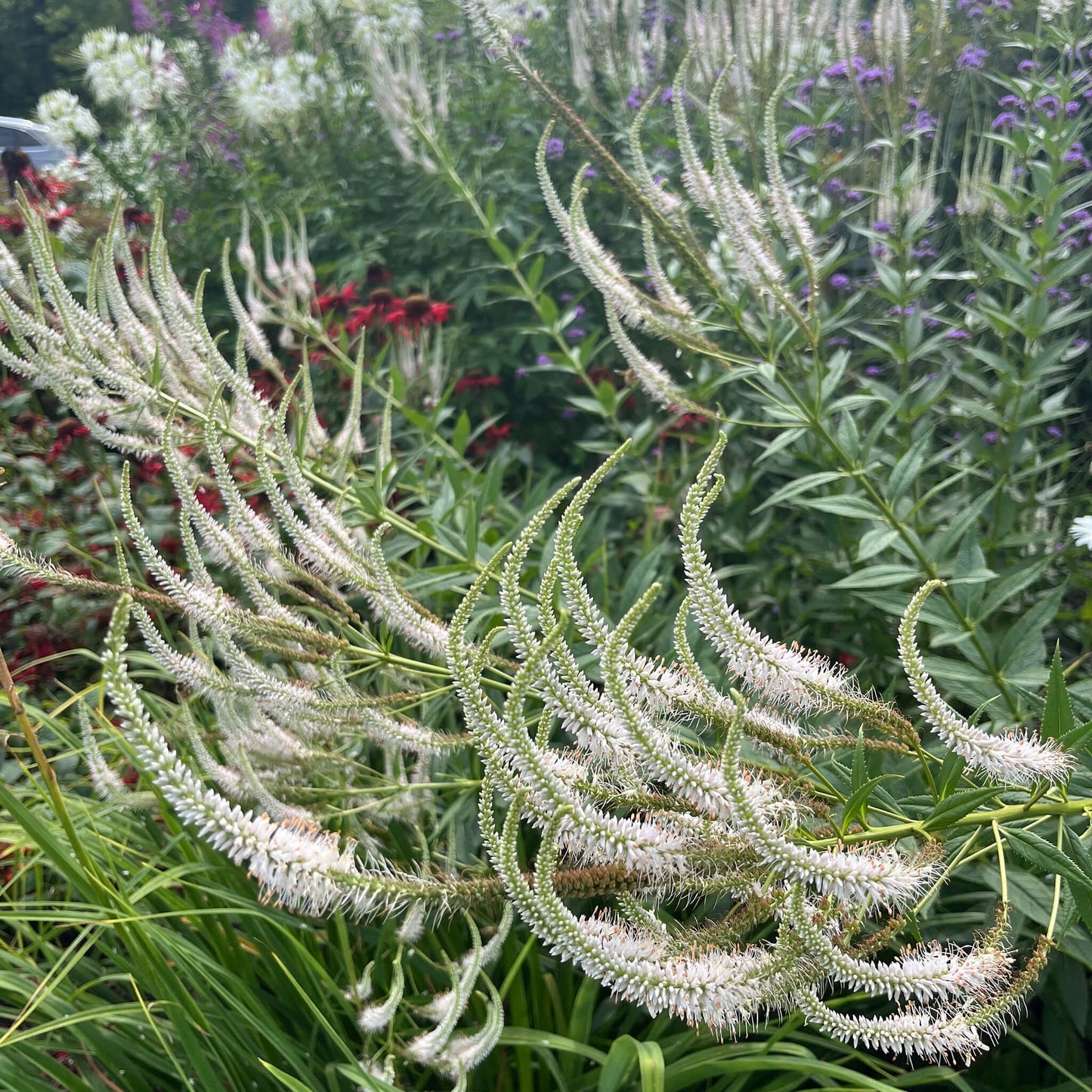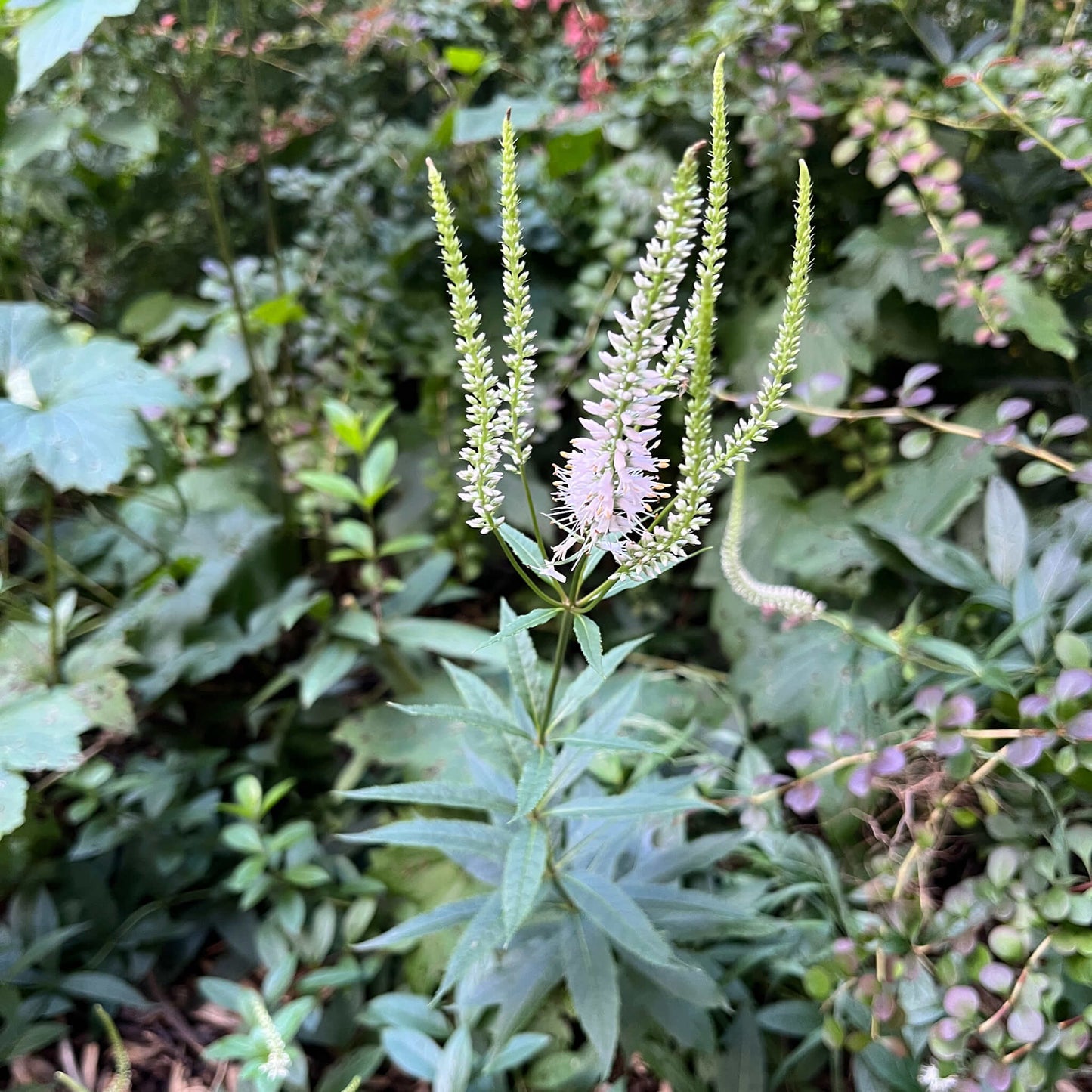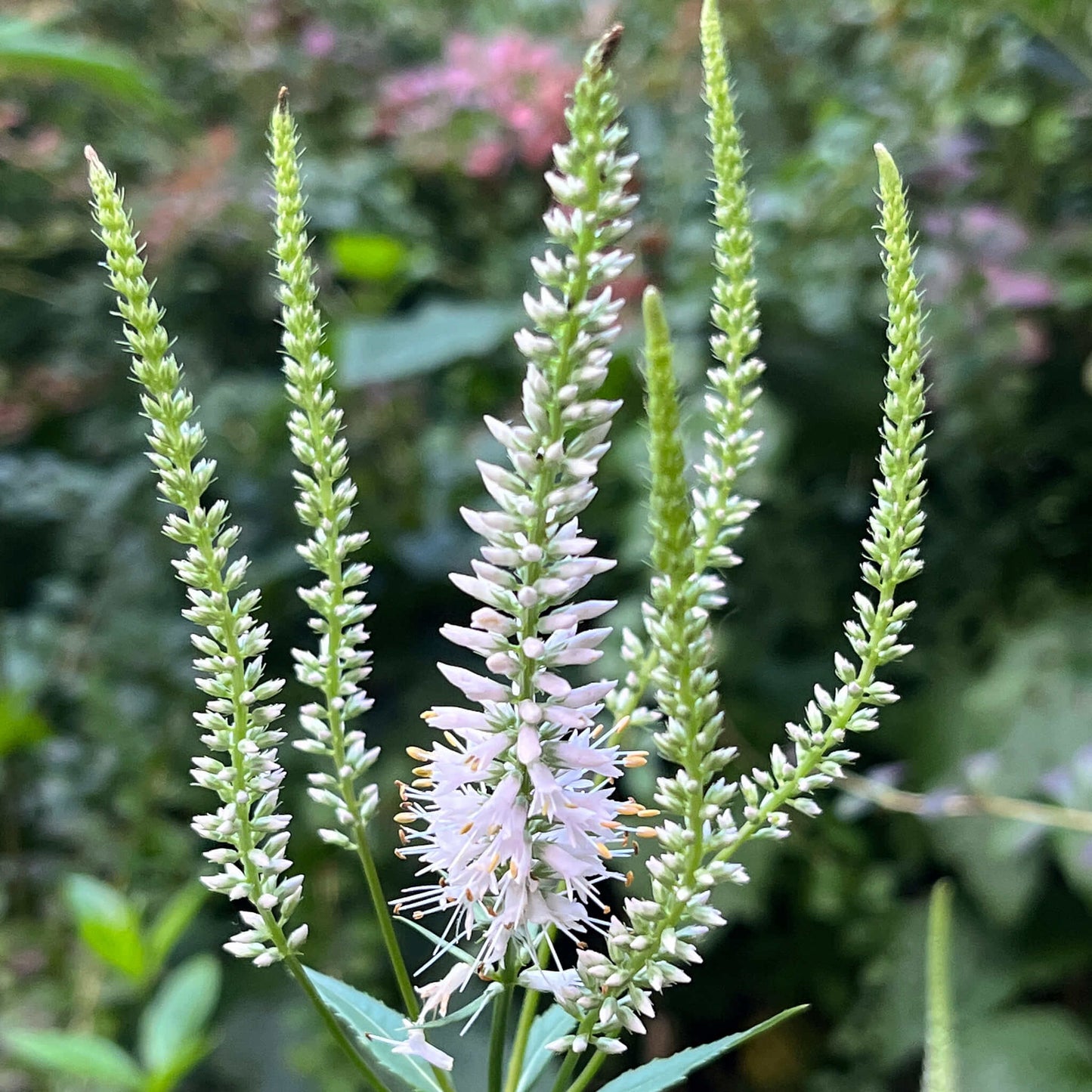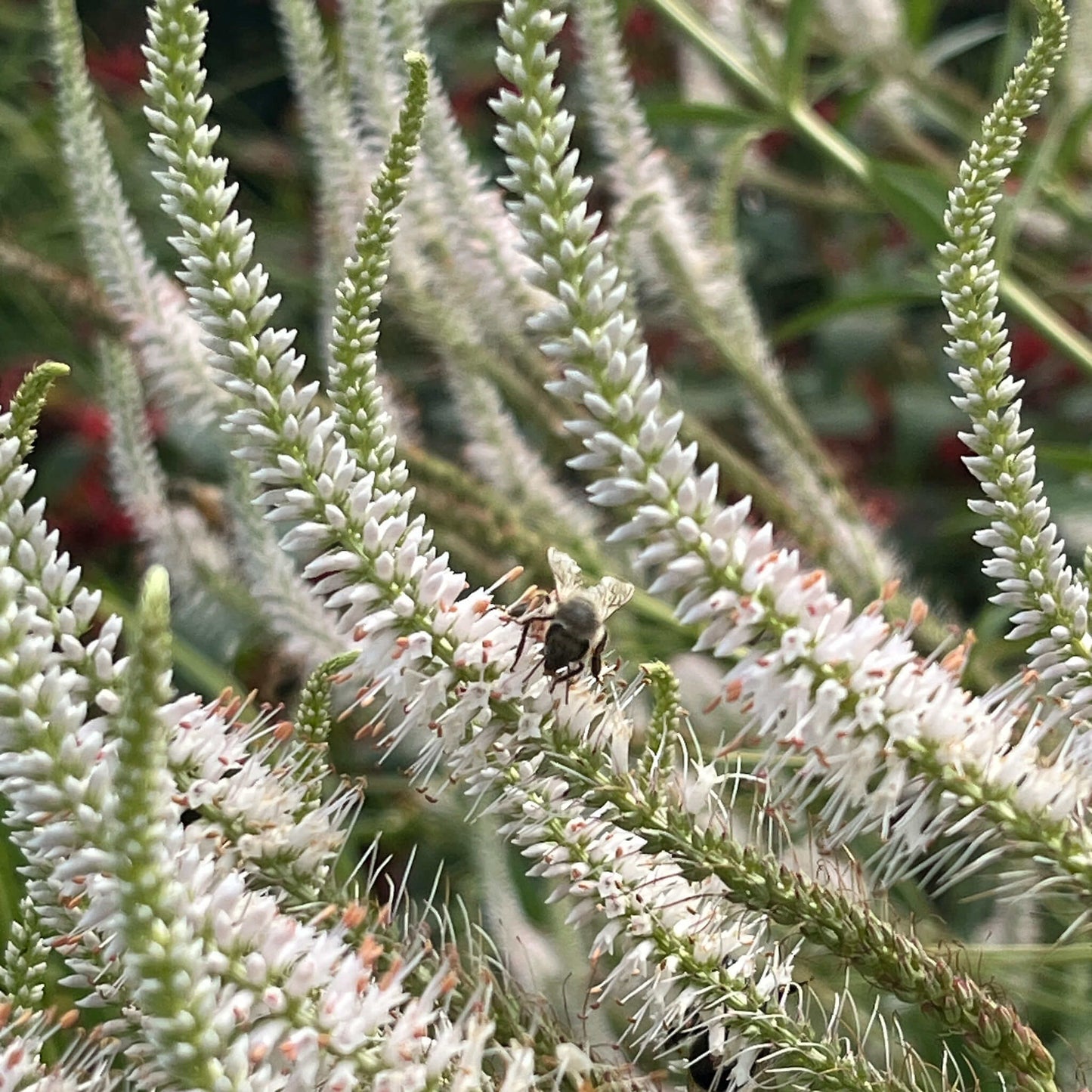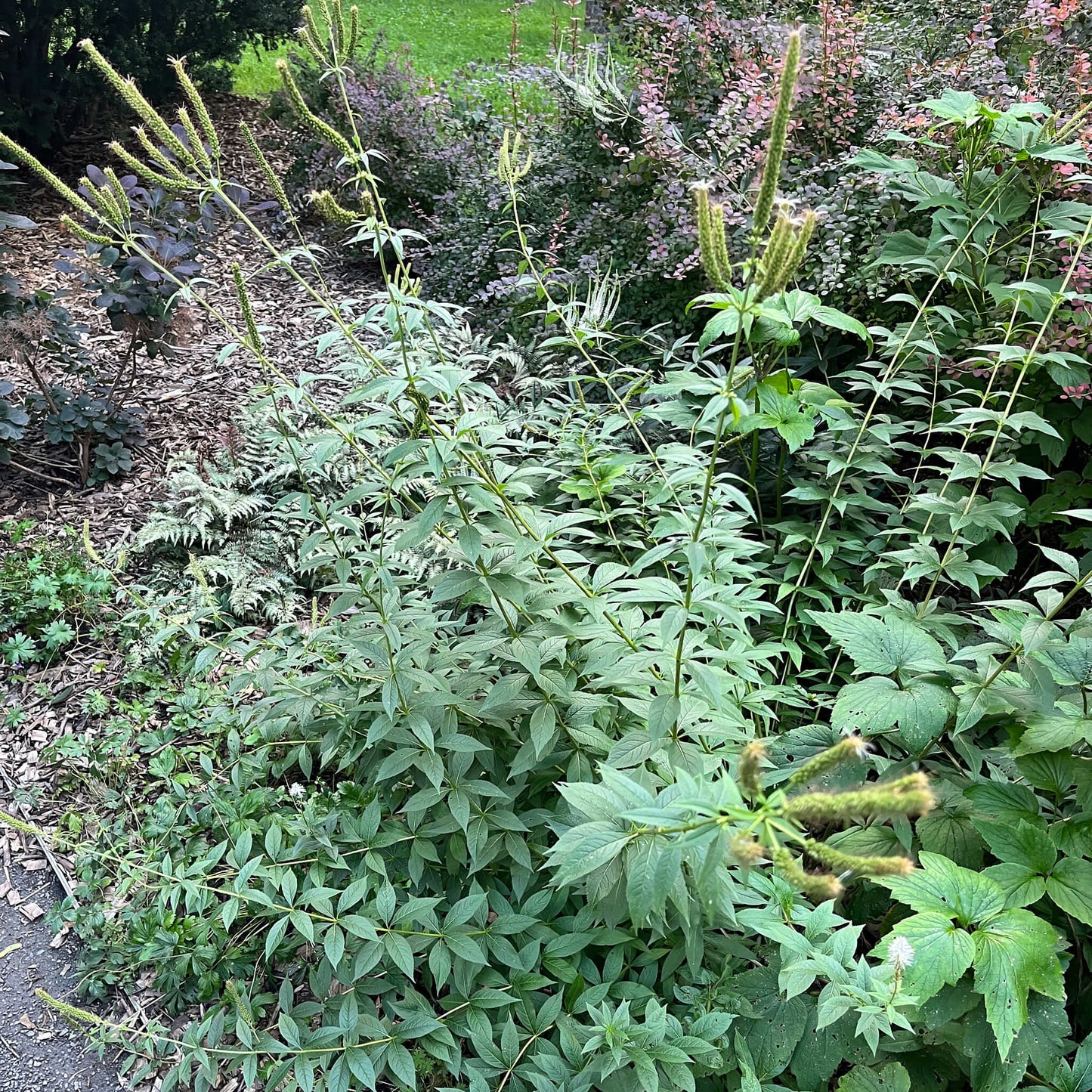This site is protected by hCaptcha and the hCaptcha Privacy Policy and Terms of Service apply.
For successful seedlings,
see the growing notes at the bottom of the page!
Culver's root (Veronicastrum virginicum) is an impressive perennial that typically reaches up to 175 cm in height. It is characterized by its upright stems and lanceolate, opposite leaves, which add a delicate texture to its appearance. The flowers, ranging from white to lilac, are grouped in elongated spikes that bloom in summer, usually from July to September, attracting a multitude of pollinators, including bees and butterflies. This species prefers rich, moist, well-drained soils and is commonly found in wet meadows, stream banks, and woodland edges. Hardy and adaptable, Culver's root adds a touch of verticality to any garden.
Ecological Role
Culver's root plays a crucial role in its habitat by providing a nectar source for various pollinators during the summer, which is essential for maintaining local biodiversity. Additionally, its roots help stabilize wet soils, thereby reducing erosion and supporting other plant species. This plant also attracts beneficial insects, promoting a healthy ecosystem in gardens and natural areas.
Akène cannot assume any responsibility for the use of plants for therapeutic purposes. Always seek advice from a professional before using a medicinal or edible plant.
Sowing and Growing
Technical Details
Seeds per packet: 300
Family: Plantaginaceae
Scientific name: Veronicastrum virginicum
Life cycle: Perennial
Hardiness zone: 3
Soil type: Loamy to clayey
Soil moisture level: Medium to slightly humid
Soil - additional attributes: Well-drained, humus-rich
Light: Sun, part shade
Blooming: July to September
Spacing: 65 cm
Height: 175 cm
Deer resistance: Moderate
Stratification: No
Scarification: No
Germination time: 20 to 30 days
Sowing depth: Surface

